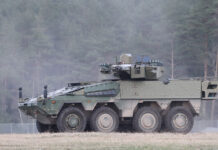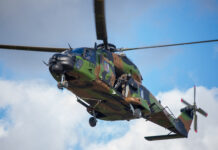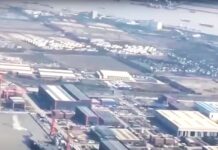Foreign powers are continuing to evacuate their diplomats and nationals from Sudan after the weekend of 22/23 April 2023 saw numerous rescue missions mounted amid continued fighting between two military factions in the country: the Sudanese Armed Forces (SAF) and the Rapid Support Forces (RSF).
On 22 April a group of more than 100 US special operations forces (SOF) extracted all US government staff, who numbered less than 100, from the Sudanese capital, Khartoum, in an operation led by US Africa Command in conjunction with the US State Department.
“This morning at 9:00 am EST, a contingent of US forces lifted off from Djibouti and landed in Ethiopia,” said Lieutentant General D A Sims, the director of operations for the US Joint Chiefs of Staff, at a teleconference with press on 22 April. “The aircraft, including three MH-47 Chinooks [heavylift helicopters], refuelled in Ethiopia before flying approximately three hours to Khartoum. The evacuation was conducted in one movement via rotary wing. The operation was fast and clean, with service members spending less than an hour on the ground in Khartoum. As we speak, the evacuees are safe and secure.”
US Under Secretary for Management Ambassador John Bass was keen to stress at the same teleconference that the US military was not assisted by local forces in this operation. “You may have seen some assertions in social media in recent hours that the Rapid Security Forces somehow co-ordinated with us and supported this operation. That was not the case,” he said. “They co-operated to the extent that they did not fire on our service members in the course of the operation. I would submit that’s as much in their self-interest as anything else.”
The EU mounted a similar operation with the help of the French military. Speaking to the press in Luxembourg on 24 April, EU High Representative Josep Borrell said, “It has been a long weekend – a long and intense weekend, trying to take our people out of Sudan. It has been a complex operation and it has been a successful operation.
“First, the staff of the European Union – 20 people – are already in Europe, and many more European Union citizens and others are already out of Sudan. I cannot give you the concrete figure; it is more than 1,000 people for sure. I want to thank France especially for taking our people out, and I want to thank the combined efforts of many countries that took their nationals out, but also all nationals that they could pick.”
Meanwhile, the British government extracted its diplomats on 23 April from an airport about 30 km from the embassy using two military transports, a C-130 and an A400M, flying out of RAF Akrotiri on Cyprus. While an advance party flew into Khartoum with the US military to locate the UK diplomats and to prepare and extract them, a unit with military vehicles was deployed from the transport aircraft to meet the extraction party and deal with any obstacles to the evacuation.
A statement from UK Defence Secretary Ben Wallace released by the UK Ministry of Defence (MoD) on 23 April read, “This morning, UK armed forces undertook a military operation alongside the United States, France and other allies. They have evacuated British Embassy staff and their dependents from Khartoum due to the escalating threats against diplomats.
“The operation involved more than 1,200 personnel from 16 Air Assault Brigade, the Royal Marines and the RAF. I am grateful to all our partners.”
The German Air Force said that it had flown 311 people out of Khartoum using a base in Jordan as a hub, with a German Ministry of Defence image showing that at least one A400M was used for this.
Other countries known to have conducted successful evacuations from Sudan include Denmark, Italy, Jordan and Spain, while CCN reported on 24 April that more evacuations were still being planned or were underway for the Netherlands, Belgium, Norway, Germany, Sweden, Egypt, Turkey, Libya, India, Russia, Australia, Japan, China and the Philippines.

However, many of the initial evacuations from Sudan have been specifically for diplomatic personnel, meaning that thousands of foreign nationals are still stranded in the country, where the fighting between the SAF and RSF shows no sign of abating.
A number of countries are therefore preparing to conduct non-combatant evacuation operations (NEOs) out of Port Sudan on the country’s eastern, Red Sea coast, where the fighting is reportedly not as intense as that in the capital.
The UK, for example, is understood to be preparing to deploy the Bay-class dock landing ship RAF Cardigan Bay and the Type 23 frigate HMS Lancaster to Port Sudan, given that these vessels are in the region, while the US government is understood to be sending ships to Port Sudan from the US Navy’s Fifth Fleet, which is headquartered in Bahrain.
However, a successful NEO out of Port Sudan will require protective military forces to be put ashore, which will inevitably involve some degree of risk.
Peter Felstead











